
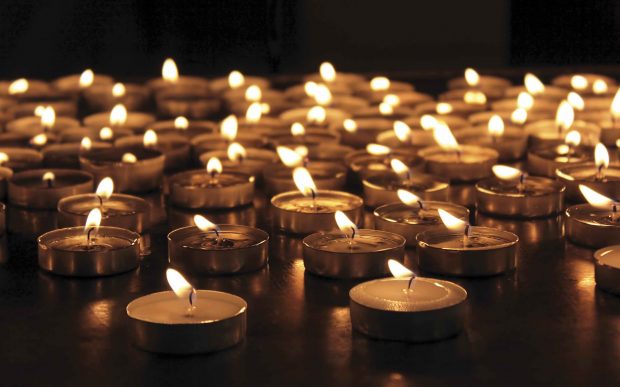
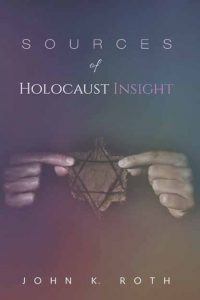
Sources of Holocaust Insight By John K. Roth ’62 Cascade Books 2020 304 pages | $35
“More than 50,” describes both the years of academic inquiry about the Holocaust and the number of books by John K. Roth ’62, Edward J. Sexton Professor Emeritus of Philosophy at Claremont McKenna College. Undoubtedly one of the preeminent scholars in the field of Holocaust studies, he recently added a new book to his collection. Sources of Holocaust Insight: Learning and Teaching about the Genocide reflects on the people, the texts, the events and places that have informed and influenced his understanding of that atrocity.
Roth is founding director of the Center for the Study of the Holocaust, Genocide and Human Rights (now the Mgrublian Center for Human Rights) at Claremont McKenna. He was named the U.S. National Professor of the Year by the Council for Advancement and Support of Education and the Carnegie Foundation for the Advancement of Teaching in 1988. Roth is also the recipient of the Holocaust Educational Foundation’s Distinguished Achievement Award for Holocaust Studies and Research.
Pomona College Magazine’s Sneha Abraham, a former student of Roth’s, talked to him about his academic formation, his new book, questions of the human condition, God, and what the Holocaust requires of us.
This interview has been condensed and edited for space and clarity.
PCM: How was your Pomona experience formative for you as a philosopher? What was that experience like?
Roth: When I came to Pomona College in the autumn of 1958, I didn’t know what philosophy was. I had some experience with religion, and my father was a Presbyterian minister, so I grew up in a home where the Bible and ideas about God were important. I was aware that there was something called philosophy, but I really didn’t know very much about it. I didn’t take a course in philosophy at Pomona until I was a sophomore. When I got into it, I thought, “This is interesting. Maybe I’ll get some answers to my questions by studying philosophy.”
But I rather quickly found out that that wasn’t going to happen because philosophy is much more about questions than it is about answers. Philosophers always come up with answers, and philosophers are salespeople in some ways. They want you to accept what they say. But the power of the discipline goes back to Socrates and the use of questions to produce dialogue and develop the wonder about things that Plato and Aristotle thought was the origin of philosophy. Philosophy begins in wonder.
Over time, I grew to love that part of philosophy. Philosophy is the discipline that persists in asking questions. That can be very frustrating if your goal is to get answers. Philosophy tries to do that, but unavoidably, the questions keep coming back.
By the time I had finished my sophomore year, I was committed to majoring in philosophy. And then something else happened. And this is a tribute to Pomona College. I just loved being in college. Pomona accounts for that. I fell in love with college because of Pomona. My experience there made a huge impact on me. I’ve spent most of my life in the culture of small liberal arts colleges, which I just think are national treasures, and as I think about the condition of our country right now, I think the contributions that small liberal arts colleges make are increasingly important. And probably endangered a bit too.
PCM: You’ve been working in this field of Holocaust studies for more than 50 years.
Roth: Yes. It’s added up to be that long. And it wasn’t where I planned to work. I didn’t go to the counseling center and say, “How do you become a Holocaust scholar?” I like to say that the Holocaust found me. It did so partly through [the late Philosophy Professor] Frederick Sontag, who is a legend at Pomona and became a close, close friend of mine—we taught and wrote together. When I was his student, he was very interested in what philosophers call “the problem of evil.”
Several of the courses that I took from Fred Sontag took me into that problem—that is, how and why does massive destruction of human life take place? And what sense, if any, can be made of it? How do we deal with those questions?
But the Holocaust was not yet where I was. Getting my attention focused on that took a while. It wasn’t until I was on the faculty of Claremont McKenna, which I joined in 1966, that the Holocaust found me and changed my life.
In the early 1970s, I followed the lead of my teacher, Fred Sontag, who said one day, “I think you might be interested in reading some of Elie Wiesel’s writings.” I read Wiesel and was captivated and compelled to find out more about what I was reading. This is why I say that the Holocaust found me more than I found it. And it changed my life. I became a different person, professionally and existentially. My life reoriented because as I found out more about what had happened to people like Elie Wiesel and his family. I discovered that a host of important questions were embedded in that experience and history. I had to follow where they led.
PCM: Why did you write this book? What was the impetus?
Roth: I was inspired to write the book because of another book that has meant a lot to me over the years. It is called Sources of Holocaust Research and was written early in the current century by a very important Holocaust scholar named Raul Hilberg. I used that book in teaching because it provides a good way for students to see how a scholar goes about studying that massive event.
Hilberg’s book made me realize that I have Holocaust sources too, and that led to seeing the book that I might write. My sources are documents sometimes, but more often, my sources are people, texts, testimonies, places, experiences. So, I thought to myself, “Well, what if I write about sources of my understanding of the Holocaust?” Or as I like to phrase it, my sources of Holocaust insight.
PCM: You mentioned that you’re the son of a Presbyterian minister. How does being an American and a Christian affect your study of the Holocaust?
Roth: When I read Elie Wiesel and I began to feel the need to learn more about what had happened to him and why it happened to his family, my study made me realize that my own tradition, Christianity, was deeply implicated in the genocide. This led me to grapple with the dark underside of Christianity. It created a personal dilemma I still wrestle with.
I put the dilemma this way. For me, Christianity has been something good, but as some of my Jewish friends would remind me from time to time, and I knew this from study too, “Well, Christianity hasn’t been so good for us.” The Holocaust remains a big, big problem for Christians. You have a good example of that right now because, after many, many years, the Vatican archives have been opened to allow scholars—once we get the COVID-19 pandemic under control—to explore the controversial history of Pope Pius XII, who reigned during the Nazi period. He’s been a controversial figure. Did he do what he should have done during that period with regard to the plight of the Jewish people?
So debate about the Holocaust and Christianity is ongoing. For me, it’s existential, because Christianity is my tradition. What do I do as I keep learning that my tradition has a dark and destructive side? My study and teaching about the Holocaust is a continuing way to cope with that. And maybe in some ways, to try to make some amends, if I can, for that terrible shortcoming.
On the American side, the role of the United States during the Holocaust also raises questions. It does so about immigration; it raises questions about action that was taken or not taken. And it certainly involves issues about racism. Black Americans fought against Nazi racism but experienced American racism nonetheless. I’ve found that my identity as an American, as well as a Christian and a philosopher, continues to have points of contact with the Holocaust, which was primarily European in its geography but had international dimensions and implications too. Some of those connections and reverberations are reflected in the fact that the United States Holocaust Memorial Museum has become such an important place in our national capital. There’s a long story about that: Why do we have a museum about the Holocaust situated close by the Washington Monument in Washington, D.C.? That’s an intriguing and significant question.
What I’ve found is that all of these identity questions drove me further and deeper in understanding that it was important to spend time teaching, learning and writing about the Holocaust.
PCM: You write about Richard Rubenstein, Elie Wiesel and Franklin Littell and how they encourage you to tell the story in your own way and to carry on the dialogue as best you can in your prayers and quarrels with God. I really liked the way you put that. What does that mean for you?
Roth: Unlike some people who confront the Holocaust, my encounters with that catastrophe have not turned me into an atheist. I resonated much more with the approach that Wiesel took in his writings. People who really fall in love with Elie Wiesel’s writings are probably people who have some deep interest in things religious because it’s hard to read Wiesel without finding, over and over again, that he’s writing about questions that have to do with God and religious practices and traditions. In particular, Wiesel is constantly carrying on a quarrel with God.
One of the things I learned as a Christian that was very helpful to me is that, in the Jewish tradition, quarreling and arguing with God and protesting against God are part of the spirituality of that tradition. Christianity tends to play down such themes because of the strong emphasis that Christianity puts on the idea of God as love. But if God is more ambiguous and mixed than that, then the Jewish tradition of carrying on arguments and protest as part of a relationship with God has a bigger role. I found I really liked that about the approach that I was discovering as I studied Wiesel, Rubenstein and other post-Holocaust Jewish thinkers.
So, I have a quarrelsome relationship with God. For me, that’s valuable just to the extent that it underscores the insight that God isn’t going to fix everything. Whether it’s fair or not, it’s up to us to try to do that as much as we can. But I hold onto a relationship with God because it helps me to maintain my conviction that history is not all that is. Reality is more than history. And I’m hopeful that, in some way, that means that what the Nazis did to the Jews doesn’t have the last word. That’s my hope. I don’t want injustice and suffering and murder to have the last word. They may have it. I don’t know for sure that they won’t, but my hope is that they don’t. My teaching and writing about the Holocaust seek to encourage and support that hope.
PCM: What is your take on the human condition? Are we basically good?
Roth: I wax and wane between hope and pessimism. I often say that my study of the Holocaust, overall, has made me more melancholy than I was as a young person. That mood isn’t the same as despair, but it includes aspects of that darkness. Melancholy isn’t paralyzing. It can combine with and even produce resistance against destructive powers.
PCM: Do you believe in moral progress?
Roth: Not in any simple way. No, I don’t. I think Albert Camus was insightful in his book The Rebel when he said that human beings can only arithmetically reduce the amount of suffering in the world. What he meant by that, I think, is that we can and must do everything we can to reduce suffering and injustice, but, unfortunately, we aren’t capable of doing away with those things. So, according to Camus, you resist, you try your best to thwart and curb and reduce these things, but if your sensibility is that you’re going to continue to make progress until such time as suffering and injustice are inconsequential, you’re misguided.
I think that the ongoing struggle against anti-semitism fits what Camus saw. Many of us who began a long time ago to teach about the Holocaust hoped that such work would curb if not eliminate anti-semitism. But we learned that this plague is more endemic and virulent than we wanted to believe.
So, I don’t believe in moral progress in any simple kind of way, but I do hope that Martin Luther King Jr. was right when he said that the arc of the moral universe is long, but it bends toward justice. That will happen, though, only if people make it happen. [During this time of pandemic,] we keep talking about the “curve” and flattening it. That curve isn’t going to bend or flatten unless people act in ways that serve the common good. Even then, as we’re learning, we’re probably not going to eradicate the novel coronavirus or the disease of racism and injustice, at least not completely.
PCM: Does the Holocaust call moral relativism on the carpet?
Roth: Yes. I have a friend, Michael Berenbaum, who wisely refers to the Holocaust as a negative absolute. We may disagree about moral values, but probably, we can come closer to agreement if we look at what we think is absolutely wrong. Even there, drastic differences may persist. The Nazis did not think that destroying Jewish life and tradition was wrong. For the Nazis, that was right and good. So it’s complicated, but as I like to say, the Holocaust was wrong, or nothing could be. If we don’t say that, then we really do open the door to the pernicious view that might makes right. Earlier this year, Attorney General William Barr emphasized that the victors write history. Even if he wasn’t incorrect factually, that proposition is morally wrong because it is the ally of might makes right, a view that cannot withstand scrutiny.
The Holocaust and events like it had better be the end of moral relativism, or we’re in more trouble than we need to be. But the dilemma is that this case of one of those where argument may not settle the matter. This is a place where my concept of insight comes in. We have to recognize that there may always be people, powerful people, who act as if might makes right and who think they will win and get to write history their way. Study of the Holocaust alerts us to have our eyes open about what to do in that case.
PCM: You say that through writer and Auschwitz survivor Charlotte Delbo you understand the importance of taking nothing good for granted. That’s the title of your epilogue as well. So, what good do you not take for granted?
Roth: The Holocaust destroyed so much that was good. So, of all my Holocaust insights, none is more important than take nothing good for granted. Over and over again, especially privileged Americans like me do take good things for granted, including life, liberty and the pursuit of happiness. Study of the Holocaust helps to drive that point home, but nowadays the COVID-19 pandemic and the renewed awareness of systemic racism in American life lift up that awareness too.
PCM: Delbo essentially says, I’m paraphrasing, but: “Do something useful with your life. Don’t let everything be useless knowledge or senseless.”
Roth: Delbo’s moving writing about Auschwitz emphasizes how her experience there was full of what she called useless knowledge. She saw torture, and she knew about murder. None of this was edifying, let alone helpful. Such knowledge was destructive and degrading. So as she works to show her readers such things, she hopes that they won’t end up saying, “So what? You know, I’ll just put this on the shelf and go on about my life.” She was looking for somebody who would read her writing and maybe, in some good way, be changed by it. Writings that come out of Holocaust experiences are sometimes so powerful that if you let them into your life, they have a way of reorienting you and changing you. Charlotte Delbo’s writings have been that way for me
PCM: I’m not sure if this was your comment in the book or if you were quoting someone, but you wrote that “Our calling is not to be perfect, but to do what we can to make room for caring help and compassionate respect in a world that is often cruelly cold and indifferent.”
Roth: When I wrote those words, I saw them—and still do see them—as a way of putting one of the most insightful teachings from the Jewish tradition—that it is not our task to complete the work of justice, but neither is it our right to refuse to take up that work. We can’t complete the work of justice, but it’s our task to do what we can, to the best of our abilities. More than 50 years of learning and teaching about the Holocaust make that insight imperative and inescapable.
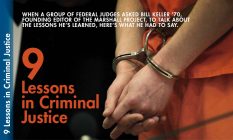
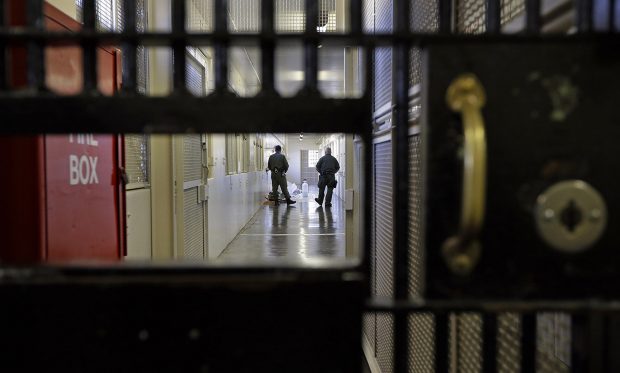
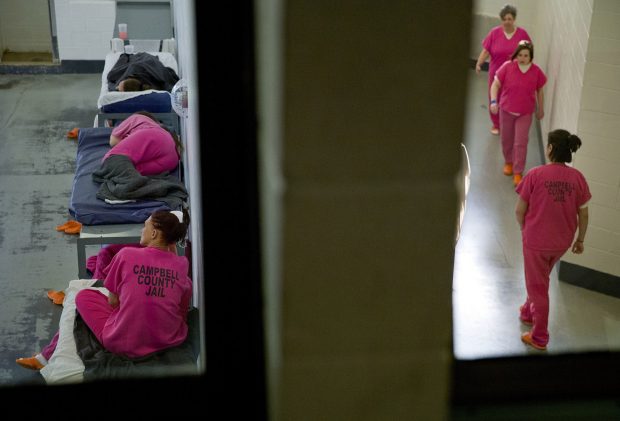


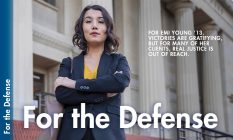
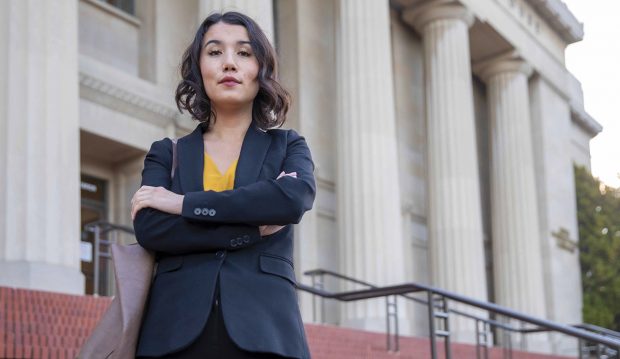
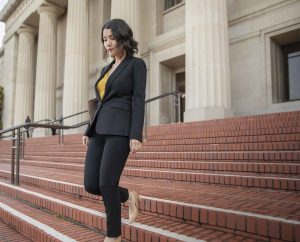 AT 28, YOUNG, WHO favors bold colored scarves, long sweaters and a silver hoop in her nose, is, well, young for her profession. She was born in Omaha, Nebraska, and her parents divorced in her early childhood. Growing up with a single, Japanese mother profoundly shaped her— especially in a school district that had been created by conservative white parents who were trying to skirt anti-segregation laws. “It felt like our family was very different,” she says. “I know my mom also really struggled sometimes.”
AT 28, YOUNG, WHO favors bold colored scarves, long sweaters and a silver hoop in her nose, is, well, young for her profession. She was born in Omaha, Nebraska, and her parents divorced in her early childhood. Growing up with a single, Japanese mother profoundly shaped her— especially in a school district that had been created by conservative white parents who were trying to skirt anti-segregation laws. “It felt like our family was very different,” she says. “I know my mom also really struggled sometimes.”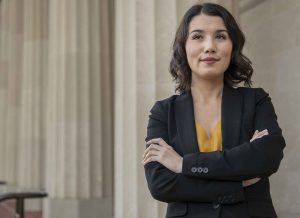 THE ROLE OF PUBLIC DEFENDER doesn’t come with much of a runway. Once she graduated from law school, Young clerked for several months at the Contra Costa Public Defenders Office—then began representing a full load of clients on misdemeanor charges soon after she passed the bar in January 2017. “When I got hired, I quite literally had three days’ transition to begin representing 110 clients, some of whom had trials set,” she remembers with a shudder and smile.
THE ROLE OF PUBLIC DEFENDER doesn’t come with much of a runway. Once she graduated from law school, Young clerked for several months at the Contra Costa Public Defenders Office—then began representing a full load of clients on misdemeanor charges soon after she passed the bar in January 2017. “When I got hired, I quite literally had three days’ transition to begin representing 110 clients, some of whom had trials set,” she remembers with a shudder and smile.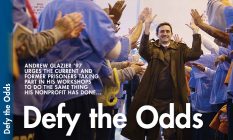
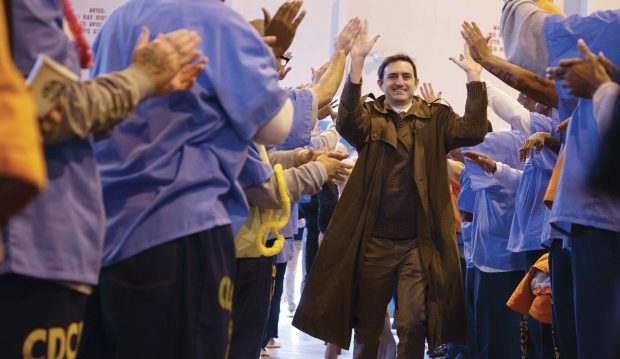
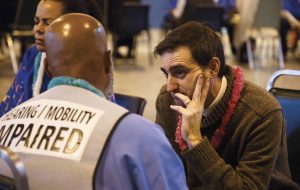
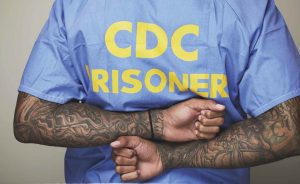

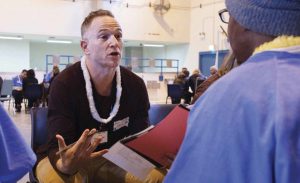 Defy’s top goal, says Glazier, is cutting the rate of recidivism, the all-important measure that tracks the proportion of released offenders who return to prison over time. Nationwide, the rate has remained stubbornly high for decades. According to the most recent study released in 2018 by the federal Bureau of Justice Statistics, more than 83 percent of inmates released in 2005 had been re-arrested at least once within nine years. Most, 68 percent, were re-arrested within the first three years. The study followed a random sample of 67,966 prisoners from 30 states, including California, Colorado and New York, all places where Defy programs operate.
Defy’s top goal, says Glazier, is cutting the rate of recidivism, the all-important measure that tracks the proportion of released offenders who return to prison over time. Nationwide, the rate has remained stubbornly high for decades. According to the most recent study released in 2018 by the federal Bureau of Justice Statistics, more than 83 percent of inmates released in 2005 had been re-arrested at least once within nine years. Most, 68 percent, were re-arrested within the first three years. The study followed a random sample of 67,966 prisoners from 30 states, including California, Colorado and New York, all places where Defy programs operate.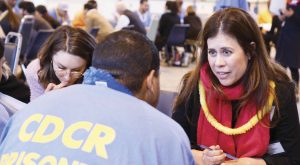
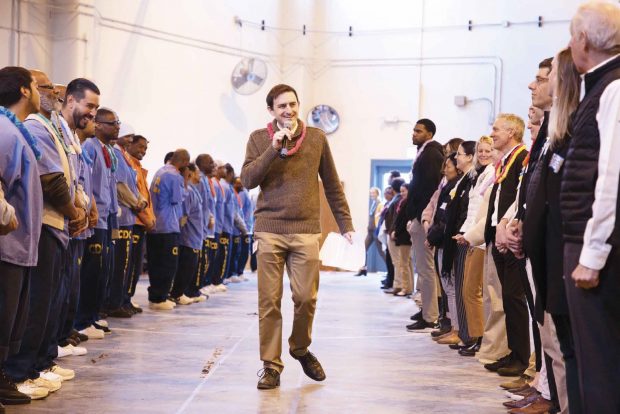
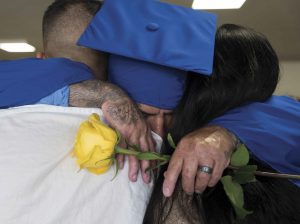
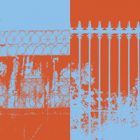
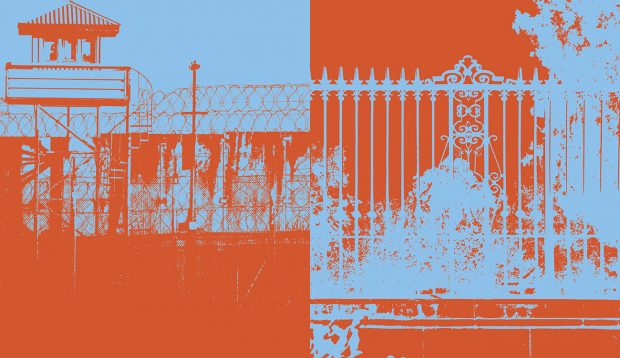 BEHIND FENCES TOPPED with razor-sharp wire, students from the 5Cs sit next to incarcerated students each semester in classes taught by Claremont Colleges professors at the California state prison in Norco.
BEHIND FENCES TOPPED with razor-sharp wire, students from the 5Cs sit next to incarcerated students each semester in classes taught by Claremont Colleges professors at the California state prison in Norco.
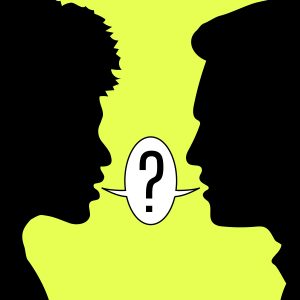 SIMPLE TRAFFIC STOPS escalate, ending in unnecessary deaths. In courtrooms, justice is not always served. And in prisons, the voices of many of the incarcerated sound alike.
SIMPLE TRAFFIC STOPS escalate, ending in unnecessary deaths. In courtrooms, justice is not always served. And in prisons, the voices of many of the incarcerated sound alike.

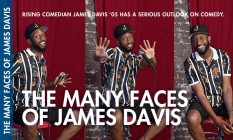
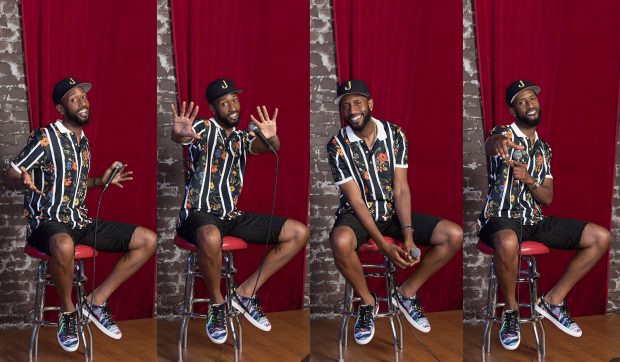
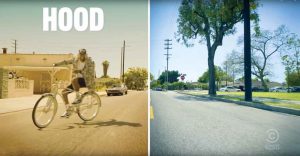 Luckily he’d grown up in L.A., so Davis had a place to crash while he was making a name for himself: His mom took him in while he went to auditions and started pulling together material for a stand-up routine. He doesn’t take that for granted, he says: “I didn’t have to sleep on any couches. I didn’t have that desperation with my comedy where I was like, ‘If this joke doesn’t land, or I don’t book this one gig, I’ll have to fly back home.’” Davis looks around the restaurant, which has been a touchstone in his life since he and his friends hung out here on weekend nights in high school, and smiles. “I’m already back home.”
Luckily he’d grown up in L.A., so Davis had a place to crash while he was making a name for himself: His mom took him in while he went to auditions and started pulling together material for a stand-up routine. He doesn’t take that for granted, he says: “I didn’t have to sleep on any couches. I didn’t have that desperation with my comedy where I was like, ‘If this joke doesn’t land, or I don’t book this one gig, I’ll have to fly back home.’” Davis looks around the restaurant, which has been a touchstone in his life since he and his friends hung out here on weekend nights in high school, and smiles. “I’m already back home.”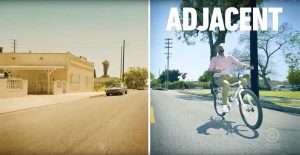 The Comedy Union was the perfect place for Davis to hone his craft, he says, in part because it tends to draw racially diverse audiences. Davis grew up toggling between black and white spaces: he was born and raised in Baldwin Hills, a historically black neighborhood, but as a teenager he would travel crosstown to Santa Monica to attend a majority-white private school, Crossroads School for Arts & Sciences.
The Comedy Union was the perfect place for Davis to hone his craft, he says, in part because it tends to draw racially diverse audiences. Davis grew up toggling between black and white spaces: he was born and raised in Baldwin Hills, a historically black neighborhood, but as a teenager he would travel crosstown to Santa Monica to attend a majority-white private school, Crossroads School for Arts & Sciences.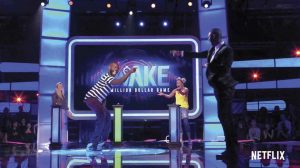 That next show is still gestating; in the meantime, he has to earn a living, which is how he ended up on a Burbank backlot shooting Awake, a show that feels like a hard left turn for a comedian whose work is usually fairly personal and political. There’s no discussion of the nuances of the black American experience on Awake; instead, Davis is responsible for shepherding a group of contestants through a series of goofy challenges made harder by the fact that they haven’t slept in 24 hours: They chug Slushies, thread needles, and turn off alarm clocks with bleary, sometimes daffy determination.
That next show is still gestating; in the meantime, he has to earn a living, which is how he ended up on a Burbank backlot shooting Awake, a show that feels like a hard left turn for a comedian whose work is usually fairly personal and political. There’s no discussion of the nuances of the black American experience on Awake; instead, Davis is responsible for shepherding a group of contestants through a series of goofy challenges made harder by the fact that they haven’t slept in 24 hours: They chug Slushies, thread needles, and turn off alarm clocks with bleary, sometimes daffy determination.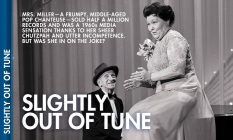
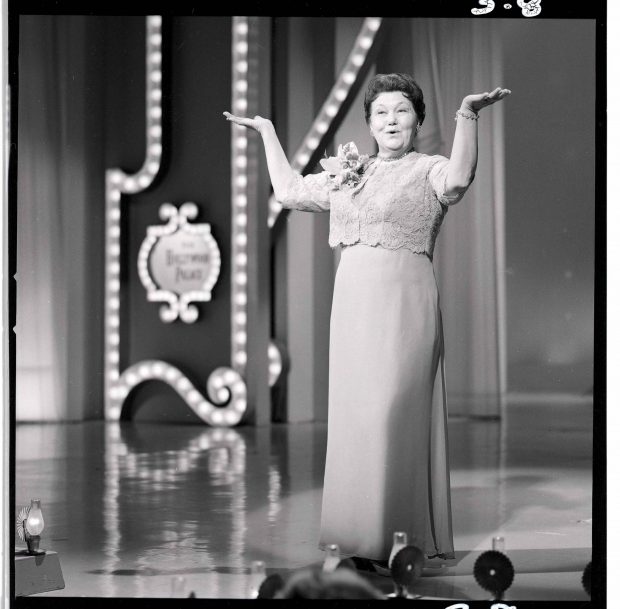
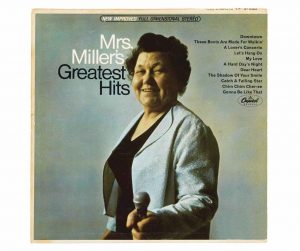 She had a first name. It was Elva. The fact that she didn’t use it professionally is a clue for understanding the joke and determining if Elva Ruby Connes Miller ’39 was in on it or not. More clues in unraveling the mystery: She released three albums—Mrs. Miller’s Greatest Hits, Will Success Spoil Mrs. Miller?, and The Country Soul of Mrs. Miller, covering everyone from the Beatles to Buck Owens—in under two years (1966–67) on entertainment industry behemoth Capitol Records. A fourth album, Mrs. Miller Does Her Thing, was released in 1968 on a tiny label out of Hollywood. That Mrs. Miller disowned this effort is the strongest evidence we have that she wasn’t fully in on but later caught on to what was happening. We’ll get to all of that soon enough, but first we have to meet Mrs. Miller.
She had a first name. It was Elva. The fact that she didn’t use it professionally is a clue for understanding the joke and determining if Elva Ruby Connes Miller ’39 was in on it or not. More clues in unraveling the mystery: She released three albums—Mrs. Miller’s Greatest Hits, Will Success Spoil Mrs. Miller?, and The Country Soul of Mrs. Miller, covering everyone from the Beatles to Buck Owens—in under two years (1966–67) on entertainment industry behemoth Capitol Records. A fourth album, Mrs. Miller Does Her Thing, was released in 1968 on a tiny label out of Hollywood. That Mrs. Miller disowned this effort is the strongest evidence we have that she wasn’t fully in on but later caught on to what was happening. We’ll get to all of that soon enough, but first we have to meet Mrs. Miller.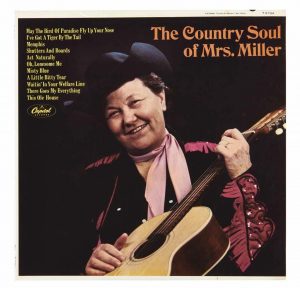 So why would a leading record label—home to the Beatles and the Beach Boys, to Frank Sinatra’s imperial period and Peggy Lee’s renaissance—want to have anything to do with Mrs. Miller? Maybe because Jonathan and Darlene Edwards won a Grammy.
So why would a leading record label—home to the Beatles and the Beach Boys, to Frank Sinatra’s imperial period and Peggy Lee’s renaissance—want to have anything to do with Mrs. Miller? Maybe because Jonathan and Darlene Edwards won a Grammy.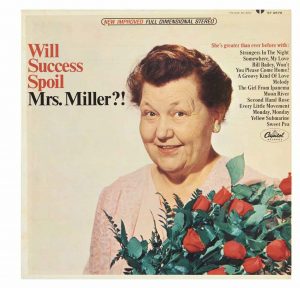 Mrs. Miller Mania had hit. This was her itinerary for 1966–68: She was whisked to New York to be on the Ed Sullivan Show. She would also be a guest of Merv Griffin, Mike Douglas and Art Linkletter. There was The Joey Bishop Show. There was an appearance on TV’s Hollywood Palace where she sat atop a piano to sing “Inka Dinka Doo” with Jimmy Durante. There was an appearance at Carnegie Hall with Red Skelton. Hollywood came calling. She played a version of herself in a low-budget film called The Cool Ones with Roddy McDowell.
Mrs. Miller Mania had hit. This was her itinerary for 1966–68: She was whisked to New York to be on the Ed Sullivan Show. She would also be a guest of Merv Griffin, Mike Douglas and Art Linkletter. There was The Joey Bishop Show. There was an appearance on TV’s Hollywood Palace where she sat atop a piano to sing “Inka Dinka Doo” with Jimmy Durante. There was an appearance at Carnegie Hall with Red Skelton. Hollywood came calling. She played a version of herself in a low-budget film called The Cool Ones with Roddy McDowell.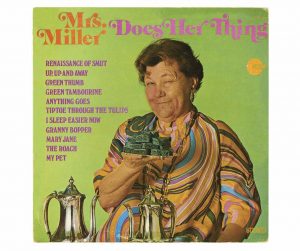 How do you explain Mrs. Miller Mania? She was interviewed by The Collegian after her initial success and said, “I just don’t know what to think about it, because I have never done anything which has brought any attention of any kind whatsoever, and I just don’t know what to say. Now the boys in Vietnam, they want me to come, but I have to go back East first. I will go there because I think the service boys come first.” On further reflection, she told reporter Bob Thomas, “I don’t understand [my record sales], but teenagers seem to be buying them. As I see it, there are two kinds of teenagers. There are the sophisticated ones, who dress like Sonny and Cher. They don’t buy my album. Then there are the teenagers who dress neatly; they are the ones who do buy my records.”
How do you explain Mrs. Miller Mania? She was interviewed by The Collegian after her initial success and said, “I just don’t know what to think about it, because I have never done anything which has brought any attention of any kind whatsoever, and I just don’t know what to say. Now the boys in Vietnam, they want me to come, but I have to go back East first. I will go there because I think the service boys come first.” On further reflection, she told reporter Bob Thomas, “I don’t understand [my record sales], but teenagers seem to be buying them. As I see it, there are two kinds of teenagers. There are the sophisticated ones, who dress like Sonny and Cher. They don’t buy my album. Then there are the teenagers who dress neatly; they are the ones who do buy my records.”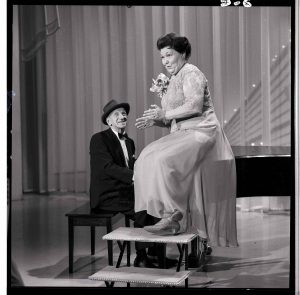
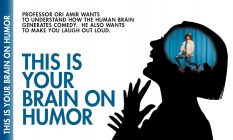
 ON A RANDOM weeknight at a comedy club in Burbank, Pomona College Professor Ori Amir bounds onto the stage.
ON A RANDOM weeknight at a comedy club in Burbank, Pomona College Professor Ori Amir bounds onto the stage. Amir’s research has been featured by Forbes, and the journal Nature reported on his work last fall in an article about how neuroscience is breaking out of the lab, citing his doctoral research at the University of Southern California with Irving Biederman on the neural correlates of humor creativity. The Guardian, Reader’s Digest and the website Live Science also have featured Amir’s work.
Amir’s research has been featured by Forbes, and the journal Nature reported on his work last fall in an article about how neuroscience is breaking out of the lab, citing his doctoral research at the University of Southern California with Irving Biederman on the neural correlates of humor creativity. The Guardian, Reader’s Digest and the website Live Science also have featured Amir’s work.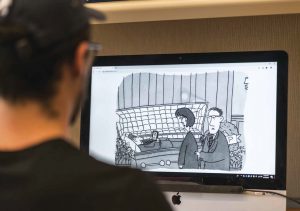
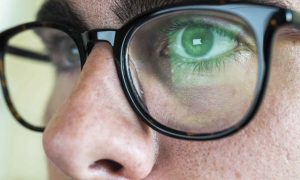 The results were then compared to something called a saliency map of the cartoon image.
The results were then compared to something called a saliency map of the cartoon image.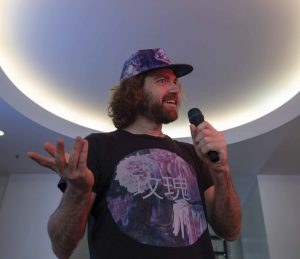 “You don’t know the path,” he says. “The path is—you’re going to end up performing for a long time in front of three apathetic strangers at an open mic, and you’re going to wait two hours to do that and have to buy something from the place. Especially in Los Angeles, it’s an extremely competitive sort of thing. But obviously if it wasn’t so rewarding, people would not be working with so much effort.”
“You don’t know the path,” he says. “The path is—you’re going to end up performing for a long time in front of three apathetic strangers at an open mic, and you’re going to wait two hours to do that and have to buy something from the place. Especially in Los Angeles, it’s an extremely competitive sort of thing. But obviously if it wasn’t so rewarding, people would not be working with so much effort.”